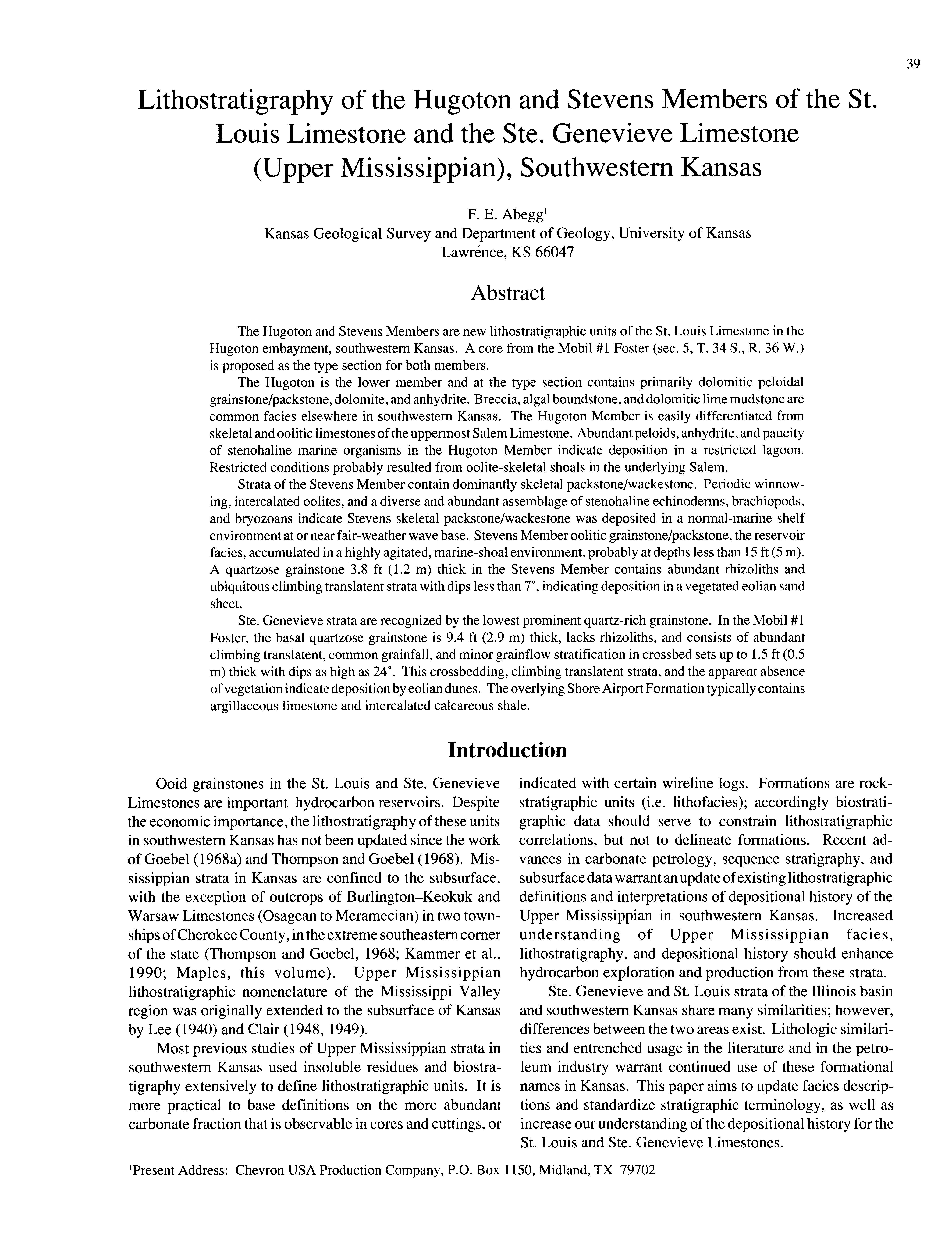Lithostratigraphy of the Hugoton and Stevens Members of the St. Louis Limestone and the Ste. Genevieve Limestone (Upper Mississippian), Southwestern Kansas
DOI:
https://doi.org/10.17161/kgsbulletin.no.230.20484Abstract
The Hugoton and Stevens Members are new lithostratigraphic units of the St. Louis Limestone in the Hugoton embayment, southwestern Kansas. A core from the Mobil #1 Foster (sec. 5, T. 34 S., R. 36 W.) is proposed as the type section for both members.
The Hugoton is the lower member and at the type section contains primarily dolomitic peloidal grainstone/packstone, dolomite, and anhydrite. Breccia, algal boundstone, and dolomitic lime mudstone are common facies elsewhere in southwestern Kansas. The Hugoton Member is easily differentiated from skeletal and oolitic limestones of the uppermost Salem Limestone. Abundant peloids, anhydrite, and paucity of stenohaline marine organisms in the Hugoton Member indicate deposition in a restricted lagoon. Restricted conditions probably resulted from oolite-skeletal shoals in the underlying Salem.
Strata of the Stevens Member contain dominantly skeletal packstone/wackestone. Periodic winnowing, intercalated oolites, and a diverse and abundant assemblage of stenohaline echinoderms, brachiopods, and bryozoans indicate Stevens skeletal packstone/wackestone was deposited in a normal-marine shelf environment at or near fair-weather wave base. Stevens Member oolitic grainstone/packstone, the reservoir facies, accumulated in a highly agitated, marine-shoal environment, probably at depths less than 15 ft (5 m). A quartzose grainstone 3.8 ft (1.2 m) thick in the Stevens Member contains abundant rhizoliths and ubiquitous climbing translatent strata with dips less than T, indicating deposition in a vegetated eolian sand sheet.
Ste. Genevieve strata are recognized by the lowest prominent quartz-rich grainstone. In the Mobil #1 Foster, the basal quartzose grainstone is 9.4 ft (2.9 m) thick, lacks rhizoliths, and consists of abundant climbing translatent, common grainfall, and minor grainflow stratification in crossbed sets up to 1.5 ft (0.5 m) thick with dips as high as 24°. This crossbedding, climbing trans latent strata, and the apparent absence of vegetation indicate deposition by eolian dunes. The overlying Shore Airport Formation typically contains argillaceous limestone and intercalated calcareous shale.
Downloads

